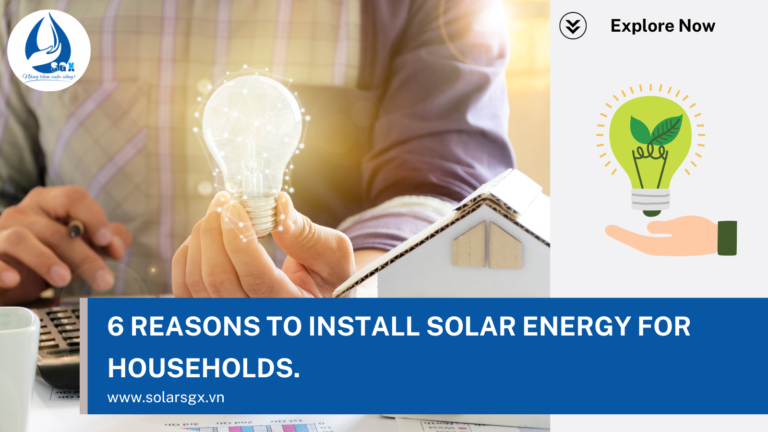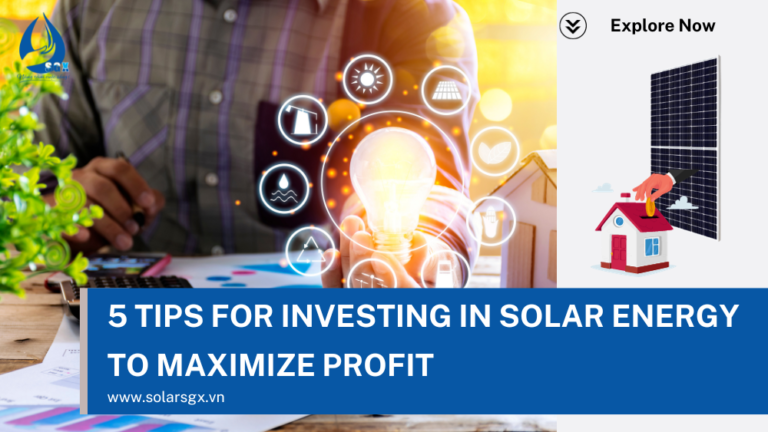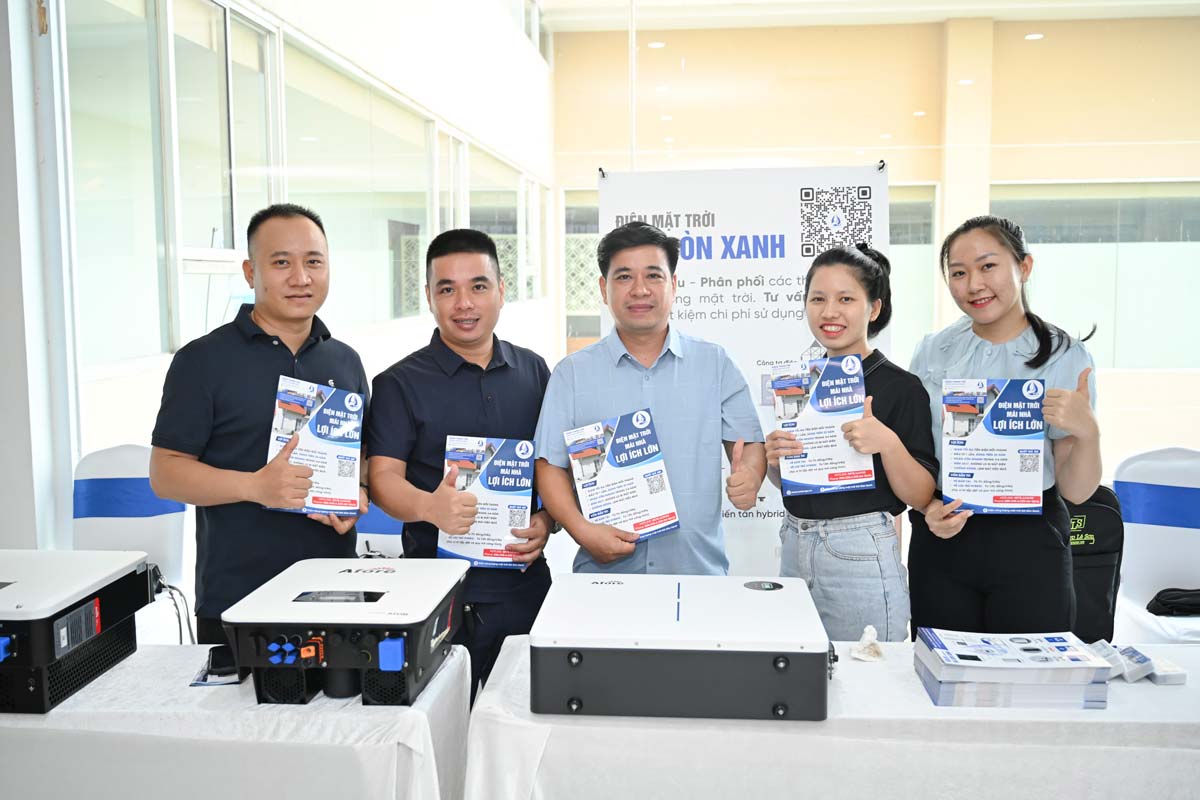Installation Guide for Safe and High-Performance Hybrid Solar Power Systems
A hybrid solar power system not only provides the benefits of renewable energy but also integrates various power sources, optimizing efficiency, and ensuring safety during operation. In this article, SolarSGX will guide you on how to install a safe and high-performance hybrid solar power system to maximize the potential of renewable energy.
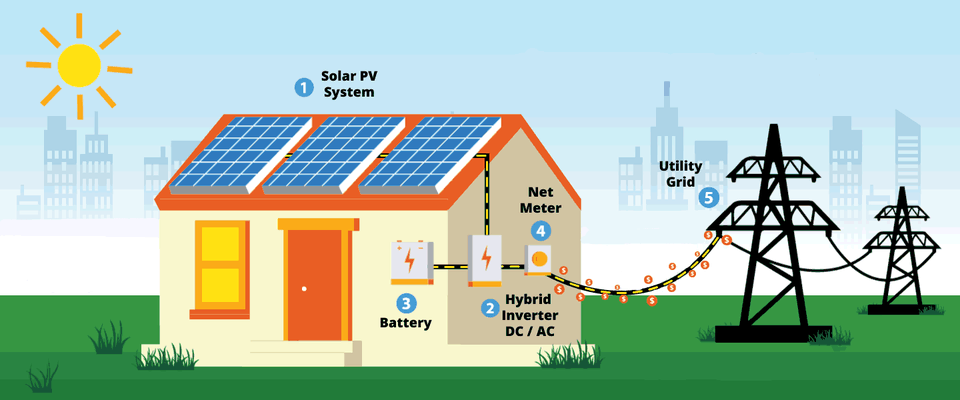
Determining Energy Needs: A Crucial Step in Installing a Hybrid Solar Power System
Before embarking on the journey of transitioning to renewable energy with a hybrid solar power system, identifying energy needs is a crucial and strategic step. Here are the factors that SolarSGX recommends you consider to ensure your system accurately reflects the needs of your home or business:
1. Current Consumption Analysis
- Electricity Consumption:
Review your electricity bills to understand your monthly electricity consumption. This will help determine the size of the system needed to meet your current needs.
- Peak Consumption Times:
Identify the time of day or year when your energy demand is highest. This will support scheduling energy storage for peak periods.

2. Future Predictions
- Family or Business Expansion:
If you plan to expand your family or business, predict an increase in energy demand and calculate the expected consumption in the future.
- New Appliances:
If you intend to add high-energy-consuming appliances such as air conditioners, heaters, or electric vehicles, calculate the increased energy demand.
3. Classification of Energy Consumption
- Heating and Cooling Energy:
The demand for heating and cooling energy can significantly contribute to the overall energy consumption. Determine how to integrate a hybrid solar power system to support these devices.
- High-Temperature Applications:
If there is a need for frequent hot water usage, consider how the system can support using solar energy to heat water.

4. System Performance
- Overall Performance:
Set goals for overall performance, including energy storage and conversion capabilities. This will ensure that the system meets all requirements and operates efficiently.
- Calculate Energy Losses:
Examine factors such as conduction losses, conversion losses, and determine ways to minimize them to optimize performance.
Identify the energy needs as a basis for selecting and installing a hybrid solar power system. Through a strategic and detailed approach, you can ensure that your system not only meets current needs but is also flexible and ready for expansion in the future.
Choosing the Right Equipment for Hybrid Solar Power Systems
Once the energy needs have been determined, the next crucial step is selecting the appropriate equipment to build the hybrid solar power system. Here are key considerations to ensure that you choose high-quality and optimal equipment for your goals:
1. Solar Panels
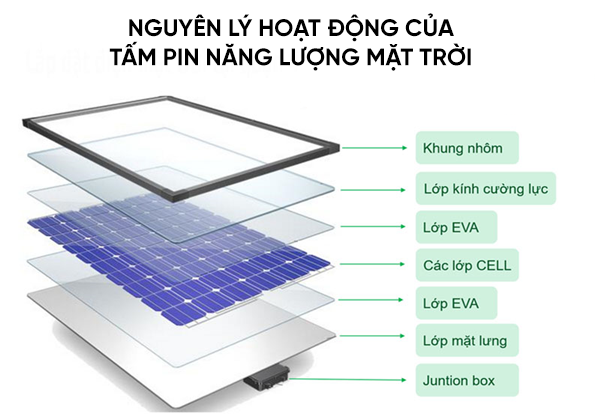
- Conversion Efficiency:
Select solar panels with high conversion efficiency to maximize sunlight utilization and generate the best energy output.
SolarSGX recommends using LONGi solar panels for their durability and consistent performance.
- Quality and Warranty:
Identify reputable brands that offer reliable warranties. The quality of solar panels is a decisive factor for long-term performance.
2. Inverter (Power Inverter)
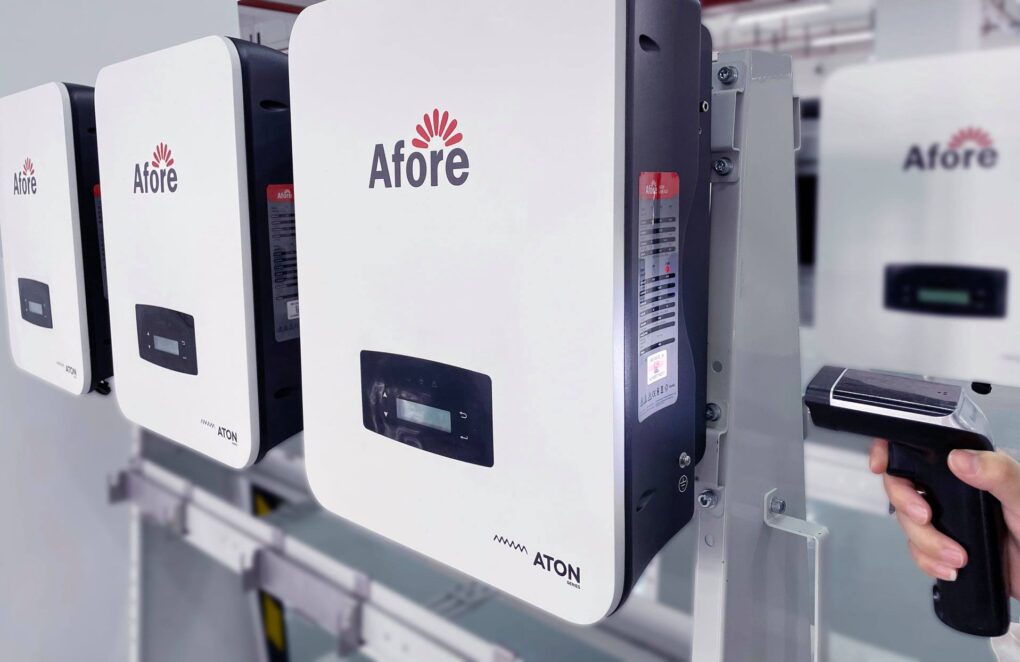
- Inverter Performance:
Select an inverter with high conversion efficiency to ensure that the energy from the solar panels is efficiently converted without significant loss during the conversion process.
Learn more: AFORE Hybrid Inverter
- Multi-Source Energy Integration:
For a hybrid system, choose an inverter with the capability to smoothly integrate energy from various sources.
3. Energy Storage System (Battery Storage System)
- Storage Capacity:
Choose a storage capacity that suits your needs, ensuring you have enough stored energy when required.
- Lifespan and Performance:
Evaluate the lifespan of the storage system and its performance in storing and releasing energy.
4. Control System
- Flexible Control:
Choose a control system with flexibility to manage and adjust the system’s operation over time and under different conditions.
- Integrated Smart Technology:
Consider selecting devices with the ability to integrate smart technology to optimize performance and minimize losses.
5. Safety and Quality Standards
Ensure that all devices comply with safety standards and are certified by reputable organizations. Look for reviews from other users to ensure the actual quality and performance of the equipment.
Choosing the right equipment is crucial for building a safe and high-performance hybrid solar power system. By focusing on efficiency, reliability, and flexible integration, you will create a powerful and energy-efficient system for your home or business.
Safe Installation for Hybrid Solar Power Systems
Installing a hybrid solar power system not only demands technical expertise but also requires special attention to safety. Below are steps and rules to follow to ensure a safe and efficient installation for your system:

1. Conduct Safety Checks at the Installation Site
- Check Building Structure:
Ensure that the structure of the house or business has sufficient load-bearing capacity to support both the weight of the solar panels and the storage system.
- Inspect Electrical System:
Before installation, inspect the existing electrical system to ensure it meets safety standards and is compatible with the solar system.
2. Approval and Compliance with Local Regulations
- Installation Permit:
Complete the necessary permit application and approvals from local authorities. Comply with regulations regarding safety and the environment.
- Adherence to Industry Standards:
Ensure that the installation process adheres to industry standards for electrical and construction.
3. Ensuring Safety for Employees and Users
- Safety Training:
Provide training for installation staff on safety measures, emergency response procedures, and the proper use of personal protective equipment.
- Implementing Personal Protective Equipment:
Require all staff to use complete personal protective equipment such as helmets, safety glasses, and fire-resistant clothing.
4. Choosing a Safe Installation Location
- Avoid Hazardous Areas:
Avoid installing the system near high-risk areas such as flames, hazardous chemicals, or areas with fire and explosion warnings.

- Access Control:
Ensure that only trained and authorized individuals can access the installation area.
5. Continuous Safety System Checks
- Regular Maintenance:
Schedule regular maintenance to inspect the system and ensure that all components are functioning correctly.
- Inspect Wiring and Connections:
Ensure that all wires and connections are inspected and maintained to prevent the risk of short circuits and ensure safety.
Installing a hybrid solar power system is a complex process and requires special attention to safety. Adhering to local regulations, training staff, and conducting continuous checks are key to ensuring that the system not only delivers high performance but also ensures absolute safety for everyone involved.
Optimizing the Installation Location for Hybrid Solar Power Systems
Choosing the right installation location can significantly impact the overall performance of a hybrid solar power system. Below are steps to optimize the installation location and maximize solar energy utilization:
1. Geometric Analysis of the Location
- Orientation and Light Angle:
Identify the best orientation and angle for sunlight at the installation location. This can optimize exposure to sunlight and enhance performance.

- Lighting Conditions throughout the Year:
Use a solar chart to understand the sunlight and shade periods at the specific location. This helps identify areas with the best sunlight.
2. Determine Tree and Structure Shading
- Tree Types and Heights:
Identify the types of trees and structures surrounding the installation site to ensure they do not create significant shading, affecting the panel’s performance.
- Check Air Conditioning Shadows:
Assess the impact of shading from air conditioning units, especially from large structures such as high-rise buildings.
3. Choose the Height and Tilt Angle of Solar Panels
- Panel Tilt Angle:
Adjust the tilt angle of the solar panels to optimize sunlight exposure. This angle often depends on your geographical location.
- Height above Ground:
Consider the height of ground-mounted solar panels to avoid shading and take advantage of light from above

4. Integrate Solar Tracking Systems
- Tracking System:
If possible, integrate a solar tracking system to optimize real-time sunlight tracking.
- Automatic Control:
Use automatic control devices to adjust the tilt angle and orientation of solar panels over time to track the sun’s movement.
5. Identify Time-Dependent Shading
- Shadow Simulation:
Use simulation software to predict how shading will change over time and seasons.
- Adjust Installation Plans:
Based on information from the simulation, adjust installation plans to minimize the impact of shading.
Optimizing the installation location is a crucial part of building an efficient hybrid solar power system. By paying attention to geometric location and shading, you can ensure that your system operates smoothly and maximizes solar energy utilization.
Warning
Electrical Safety |
|
Always adhere to electrical safety rules, such as turning off the power before performing any maintenance or installation tasks. Install a lightning protection system to safeguard the system and the house from damage caused by lightning strikes |
Occupational Safety |
| Ensure that all employees involved in the installation are trained in occupational safety and use the necessary personal protective equipment. |
Integrating an Energy Storage System for Hybrid Solar Power Systems
Integrating an energy storage system is a crucial step to maximize the potential of your hybrid solar power system. Here are strategies and steps to achieve optimal performance and stability:
1. Determining the Necessary Energy Storage Capacity
- Energy Consumption Analysis:
Review daily energy consumption data to determine the necessary storage capacity. This ensures that the system has sufficient energy reserves to meet the demand.
- Calculate Autonomous Supply Time:
Evaluate the system’s need for autonomous energy supply during periods without sunlight and ensure that the storage capacity is adequate for these times.
2. Choosing the Type of Energy Storage System
- Application of Lithium-Ion Batteries:
Lithium-ion batteries are often preferred for their high storage capacity, long lifespan, and compact size.
- Scalability:
Choose a storage system with scalability to increase capacity if demand grows in the future.
3. Smart Energy Management System
- Charge and Discharge Management:
Utilize a smart management system to control the charging and discharging processes, optimizing battery lifespan and performance.
- Enhance Flexibility:
Integrate flexibility in energy management to optimize the use of energy from both solar and storage.
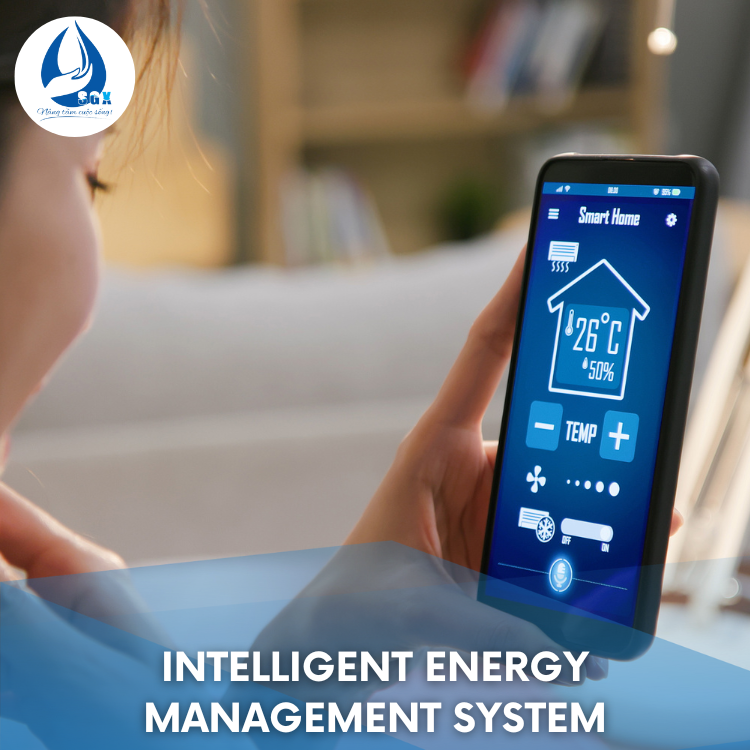
4. Integrated Motion System According to Demand
- Integrated Motion System:
Use a tracking system to adjust solar panels to harness light when there is a demand for energy from storage.
- Adjust Based on Predicted Demand:
Based on energy demand predictions, adjust the motion system to optimize integration between solar energy and storage.
5. Energy Efficiency Control
- Multi-Source System Control:
Integrate efficiency between solar energy and stored energy to minimize losses.
- Optimize Charge and Discharge Cycles:
Optimize charge and discharge cycles to ensure the system operates smoothly and does not encounter energy-related issues.
Combining an energy storage system is a crucial part of building a flexible and efficient hybrid solar system. By incorporating smart technology and efficient energy management, you can ensure that your system provides stable and continuous energy, even when sunlight is not available.
Điện năng lượng mặt trời Sài Gòn Xanh – Nâng tầm cuộc sống!
- TƯ VẤN – KHẢO SÁT – THI CÔNG
- 0976 123450 (phím 1), 096 5594559
- Website: solarsgx.vn
- Fanpage:Điện năng lượng mặt trời Sài Gòn Xanh
- Địa chỉ: 21 Sến Quỳ, Ninh Sơn, Thành phố Tây Ninh, Tây Ninh

